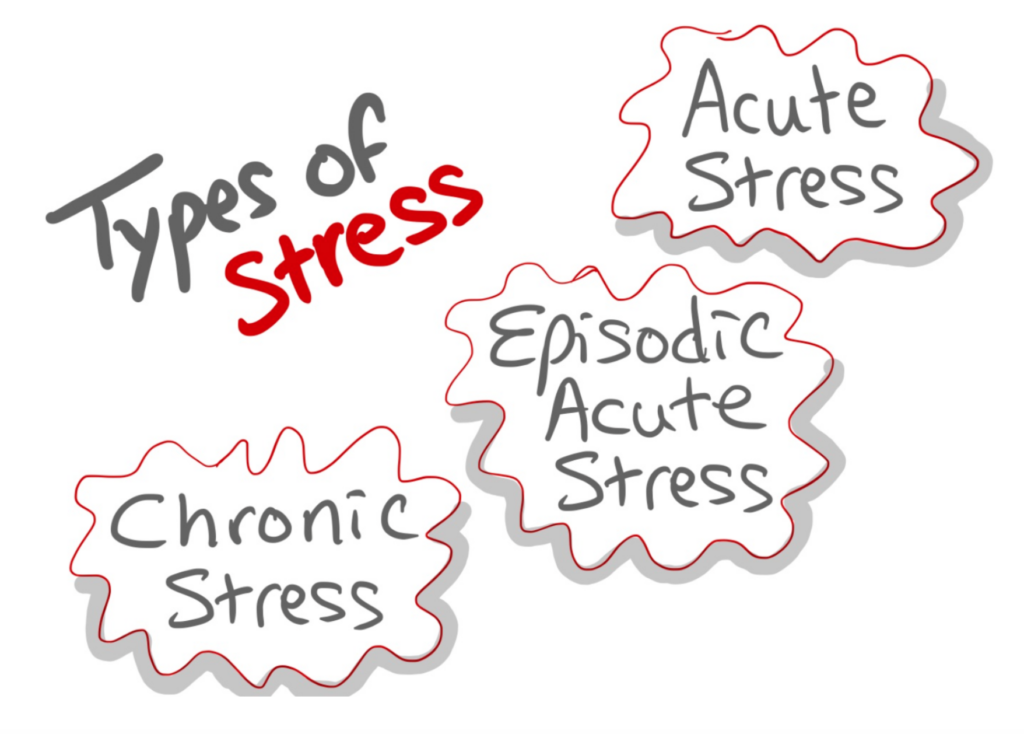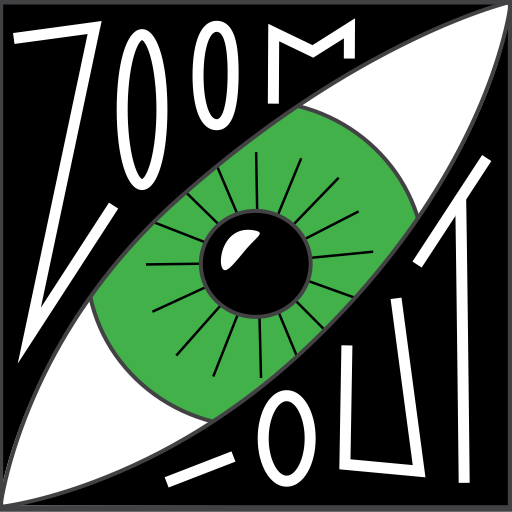
Let’s explore how Zooming-Out can help us view, think about and act upon stress in the most optimal way.
What is stress?
We are all familiar with stress, we’ve all experienced it.
Here are a couple of dictionary definitions:
Stress is: “subject to pressure or tension.”
Stress is “to cause mental or emotional strain or tension in.”
At this point, it’s worth making the distinction between physical stress such as heat, physical pressure on our body, etc and psychological stress. In Zoom-Out we are concerned with psychological stress – which is what people usually mean when they refer to the stress of everyday life.
Types of stress
There are generally considered to be three types of stress:

Acute stress is a short-lived, often high intensity reaction to a challenging situation (a stressor). Acute stress being short-lived
Episodic acute stress is where the acute stress is experienced regularly.
Chronic stress is where stress is long-lived and constant. It can be caused by life factors and more constant environmental stressors.
It can lead to a feeling of being overwhelmed and burn-out as a person’s psychological resources become depleted. Chronic stress can lead to illness and may require treatment.
Distress versus Eustress
Distress is the label given to stress that is considered overwhelming (insufficient resources) and damaging and is associated with negative emotions.
Eustress is the label given to stress that feels challenging but manageable (sufficient resources) and is associated with positive emotions and growth.
Which type of stress is as much a reflection of the person and their inner resources than the external stressor. Faced with the same stressor, one person may experience distress while another eustress.
The role of perspective in stress
I think we can all relate to these definitions of stress but from a Zoom-Out stance, there is a vital piece of the jigsaw missing and that is the role that perspectives and human perception play in stress. Here’s a more helpful definition:
Stress is: “The physiological changes in your body due to external factors that are perceived as threatening harm, loss or misfortune, or as demanding more than you have in resources or capabilities.”
– Theresa Fox, DeStressify
The key zoom-out words here are:
“perceived as threatening”
This is incredibly empowering!
We have an extra variable to play with in the stress equation.
the ability to also change how we are viewing a stressful situation (stressor)
Zoom-Out is about acknowledging and developing this ability.
Stress may be in the eye of the beholder!

This is ancient wisdom.
“There is nothing either good or bad, but thinking makes it so.”
– Shakespeare’s Hamlet
“People are not disturbed by events but by the view they take of them.”
– Epictetus, Stoic philosopher, A.D. 55 – 135
“We suffer more in imagination than in reality”
– Seneca, Stoic philosopher
“We are what we think.
All that we are arises with our thoughts.
With our thoughts, we make the world.”
– The Buddha, 563 – 483 BC
Lazarus’ transactional model of stress
In 1976 Richard Lazarus developed what was to become a highly influential model of stress. In his transactional model, cognitive appraisal is key to understanding stress.
Cognitive relates to thinking and appraisal means making a judgement when evaluating a potential stressor.
A person perceives a situation and gives meaning to it. Stress arises when a person perceives that a situation places a strain on them which is greater than their resources.

More generally, the Zoom-Out mindset correlates strongly with our cognitive reappraisal skills.
Stress arises when a person perceives that a situation places a strain on them which is greater than their resources.
Our ability to step back from a default perspective and find the most helpful perspective is another way of expressing cognitive reappraisal as expressed by some of the Zoom-Out signposts and motto:
“All Perspectives are wrong but some are helpful”
– Zoom-Out Signpost
“Default perspectives can be overridden”
– Zoom-Out Signpost
“Zoom-Out to find the most helpful perspective”
– Zoom-Out Motto
You will find that some of the individual Zoom-Outs can help with “coping” with stress in the model as follows:
- Some Zoom-Outs are “emotion-focused” and help “change the relation to the situation”
- Some Zoom-Outs are “problem-focused” and help “change the situation itself”
- Some Zoom-Outs are both “emotion-focused” and “problem-focused”
Perspective on stress itself
It turns out that the rabbit hole goes even deeper than just our perspective on events/stressors.
Our perspective on stress itself has a profound effect on the role that stress plays in our lives.
It even has an effect on our physical health and life span.
If we view stress as damaging and something to be avoided, in the long run, stress can make us ill and reduce our life expectancy.
If we view stress as a challenge and something that strengthens us then the opposite can be true.
See also:
Explore what is stressing you out right now and how zoom-out may help.
Explore a source of ongoing stress.
